Japanese black tea conference was hold in HandShake lounge on 10th floor of Itoya in Ginza, Tokyo at 2nd and 3rd September.
A variety of the finest black teas were displayed and served for tasting on the lounge by the professionals of black tea production all around Japan.
Those “black tea artisans” can express multihued flavors and texture of black teas by controlling tea processing, selecting cultivars, elaborate management of tea plantations. Their everlasting efforts can create amazing natures of black teas.
I’d like to share my impressions about these creative black teas from various tea estates all around Japan.
At first, I’d like to introduce 3 prized black teas in this conference.
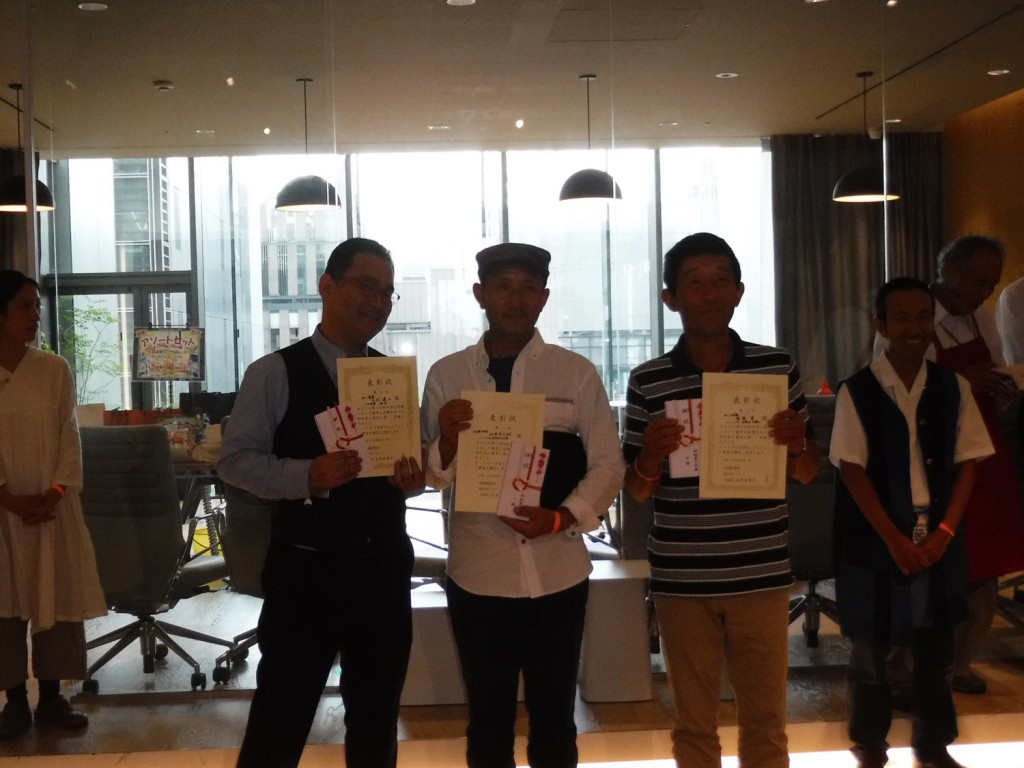
The big 3 of prized black tea artisans in the Japanese Black Tea Conference on 2nd September in Ginza Itoya. The gold medalist is the Samurai tea farmer, Mr. YAMAMOTO (central). Mr. Nakamine (leftside) and Mr. Gotoh (rightside) are silver and bronze medalists, respectively.
1. “Haruzumi Baisen” – Roast Spring Flush by YAMAMOTO Morihiko
Mr. Yamamoto, one of the best black tea creators in Shizuoka, presented 3 types of special black teas.
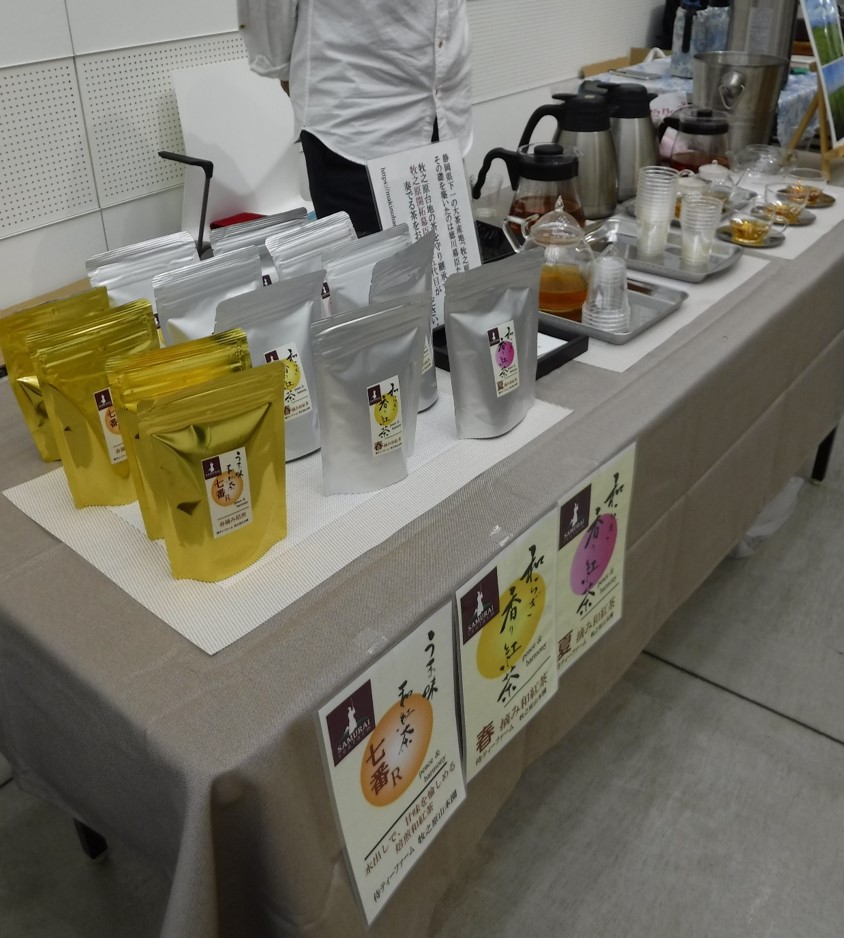
3 types of black tea displayed on the table by Mr. Yamamoto. The gold package 0n leftside is “Haruzumi Baisen” black tea, elected as 1st prize in this conference.
Especially, “Haruzumi Baisen” was so excellent, which means roasted black tea of first flush. At the moment I sip it, sweet and fresh aroma come through my mouth and nose. The graceful aroma, I felt like Muscat grape, spread on my tongue. Smooth texture of the infusion was comfortable for my tongue. The adequate content of tannins provides soft and clean finish, which is so desirable for my preference!! This tender flavor would be liked by children. In fact, his granddaughter drinks the black tea at every meal.
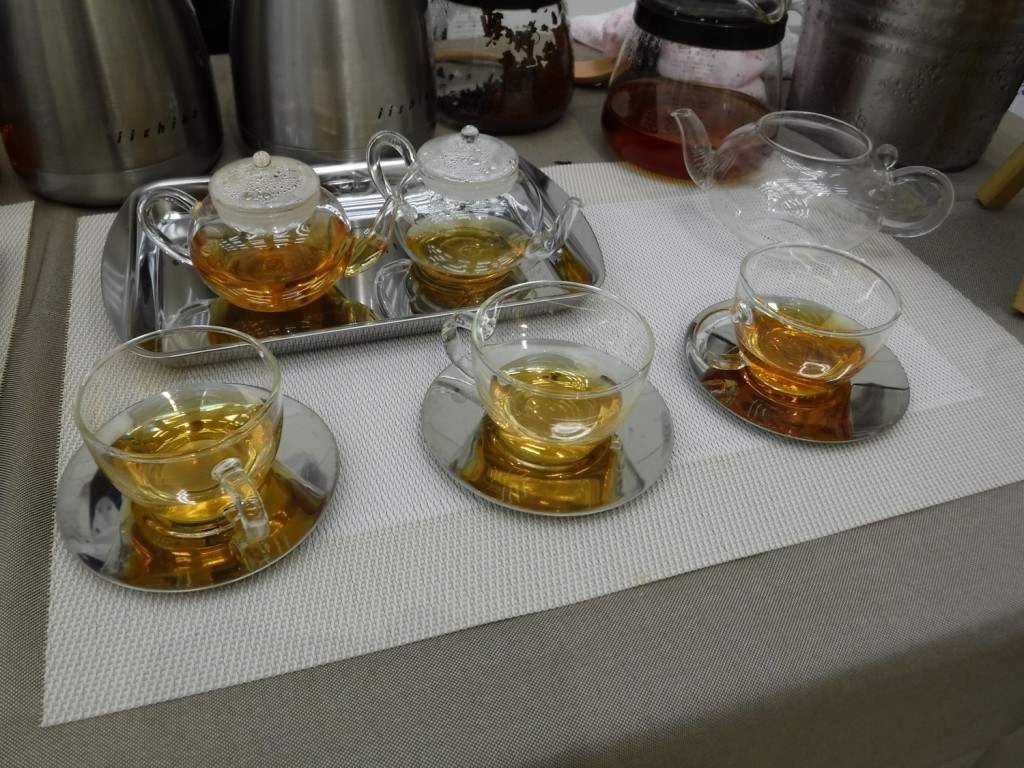
Beautiful amber color of each infusion attracts us. The left one is “Haruzumi Baisen”. As implied by the liquor color, the texture of left one is mild. The right one is “Natsuzumi Kocha” – summer plucked black tea. Its deeper amber color indicates its denser texture. I like this one too.
He was elected and awarded as the best artisan of Japanese black tea in this conference. Indeed I felt his black tea was the most aromatic!!
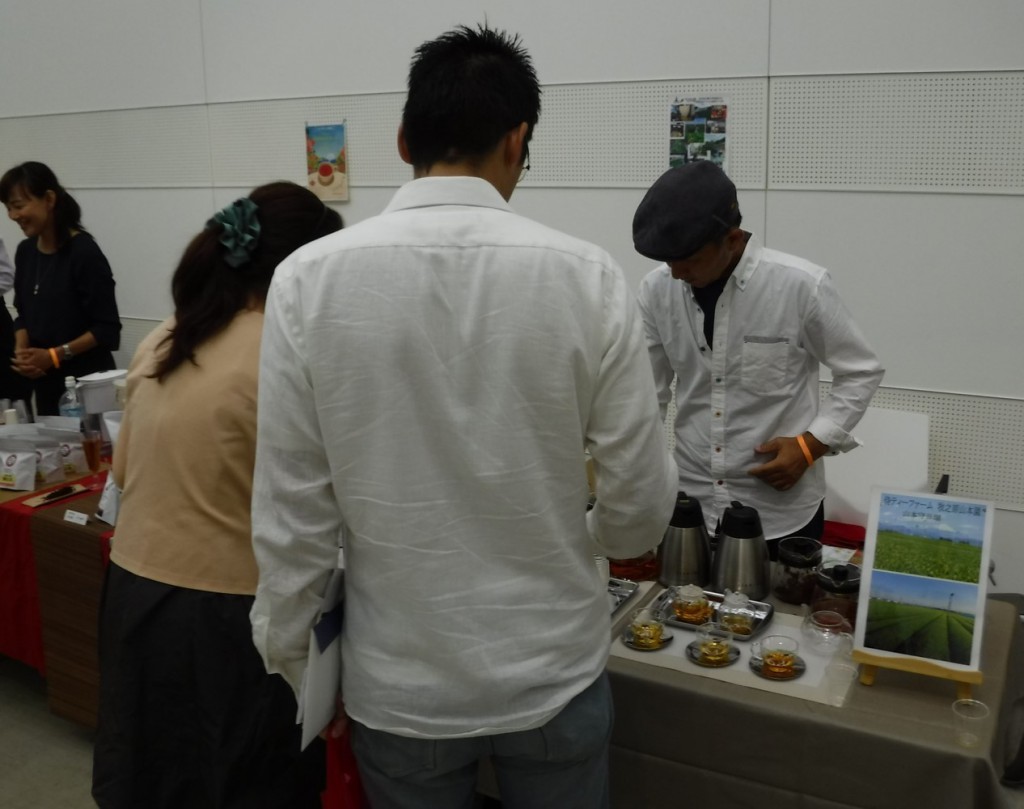
Young people seem to like the black teas.
His creative mind not only produces the finest black teas, but also organizes events of black tea hand-processing! As I posted, he has challenged to conduct cultural events of black teas. I’d like to share the event information as possible.
As a postscript, I’d like to introduce the other aspects of him. He is a descendant of samurai worked for Tokugawa Shogunate. As explained before, Makinohra upland was developed for tea industry by former retainers of Tokugawa Shogunate from the beginning of Meiji period. Pictures of his efforts, cultivation and production of special teas on Makinohara upland, can be looked on his blog as follow.
URL : https://makinohara-yamamotoen.amebaownd.com/

2. Yame Black Tea created by the cooperation of Yuge Seicha & Mr. Nakamine
The prize of 2nd award was presented for Mr. Nakamine, who is the organizer of black tea production. This excellent black tea “Yame black tea” was produced by Yuge Seicha tea factory in Yame tea estate based on the consultant of Mr. Nakamine. This black tea has the best softness and caramelly bodied texture. I felt its mouthfeel as caramelly and mellow as milk tea of Sri Lanka black tea. It was the most important for the production of the black tea to carefully check the state of tea leaves in every process, Mr. Nakamine said.
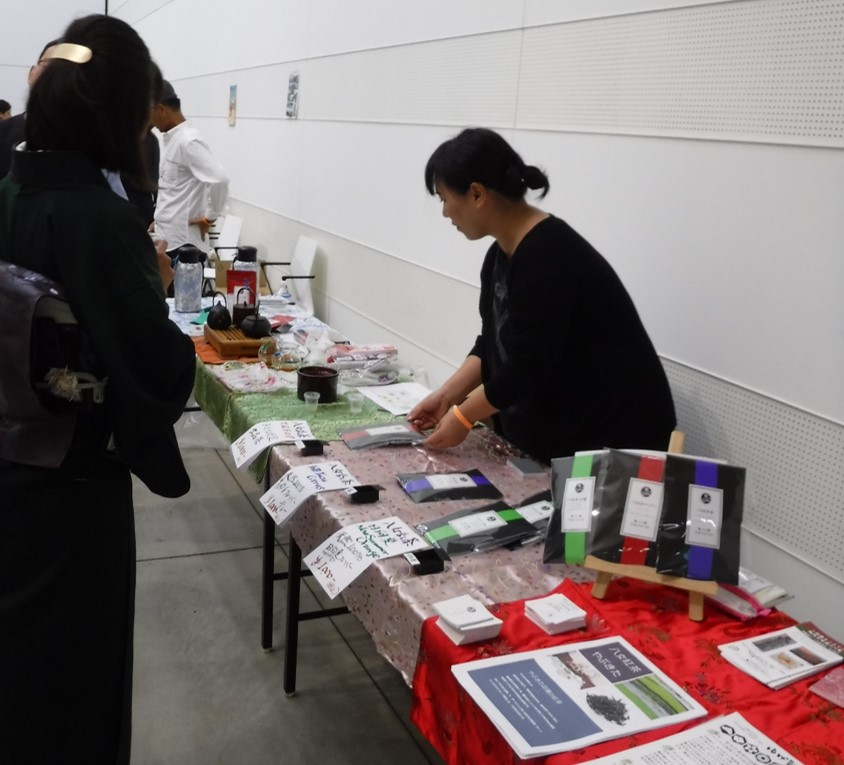
Mr. Nakamine served 3 types of black teas. One is the prized one “Yame Black tea”. In addition, 2 types of flavored black tea were served. One is flavored with Yuzu citrus, the other is flavored with New Summer Orange.
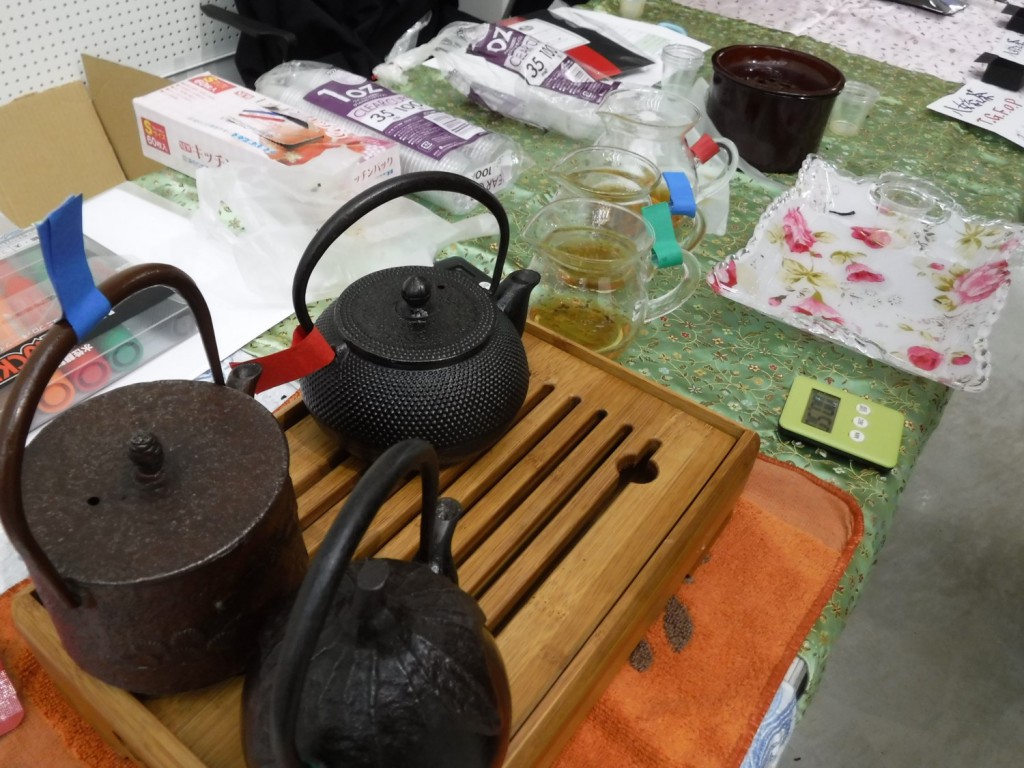
3 types of black tea were prepared in different iron tea pots.
Both of them has elegant fragrance of each citrus. The appearance of loose leaf tea shows they don’t contain the dried citrus. Naturally extracted aroma seems to be added. I was very curious with the method of aroma extraction and asked him to let me know. Unfortunately the technique is secret, he said.
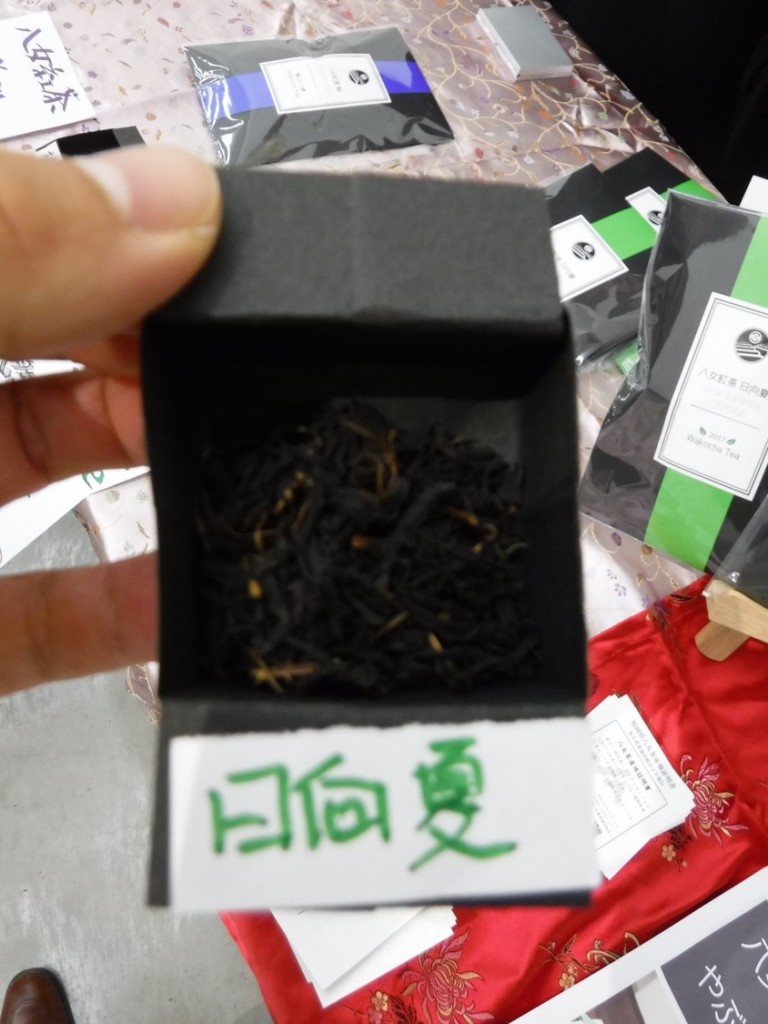
The appearance of the black tea flavored with New Summer Orange.
3. Hand-made Black Tea “Benifuki” presented by Nejime Saryo
This hand-made black tea was elected as 3rd place award. I preferred their full-bodied black tea. This IS black tea, I felt when tasting. Higher content of tannin provides denser mouthfeel with long pleasant finish.
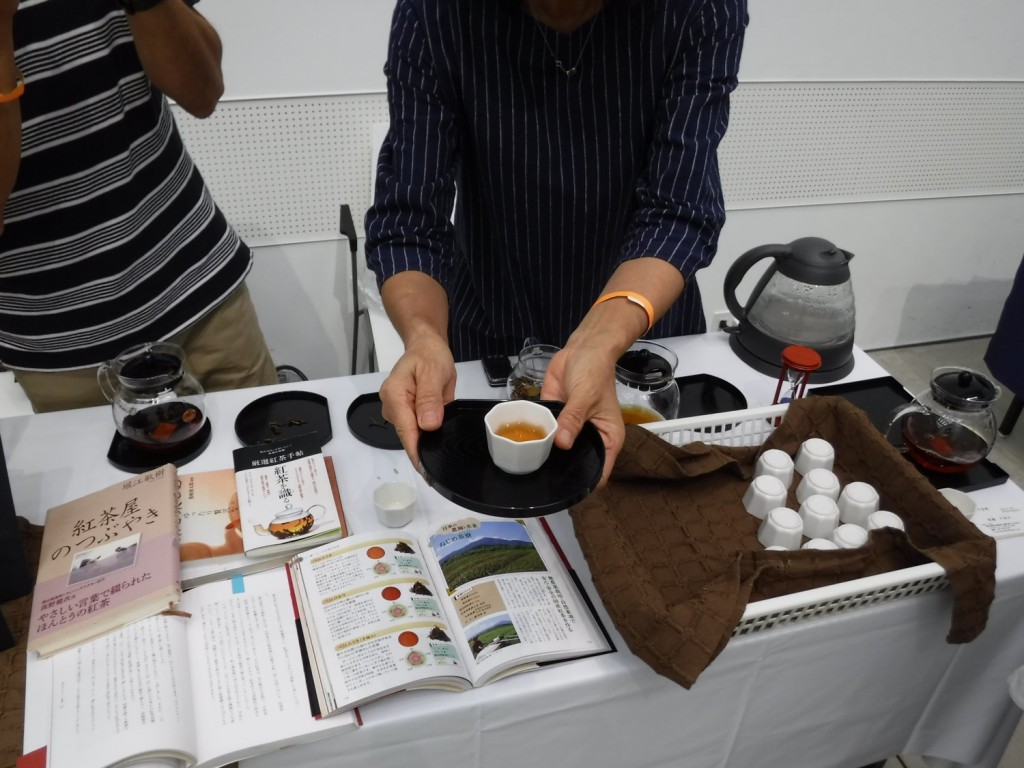
Mr. and Mrs. Gotoh kindly served a cup of well-bodied black tea for visitors.
Nejime Saryo is managed by the owner couple. This hand-made black tea was produced by a series of their efforts, such as hand plucking, elaborate conditioning of withering and processing with careful observation for the state of tea leaves in each procedure.

Deep amber color implies it is suitable for my preference. Indeed it was so delightful!!
They said such efforts are conducted by each creators of black tea participated in this conference. Yes I also think so, every black tea delighted my tongue and mouth.
Besides the prized black teas, notable black teas presented in this conference.
“Spring Hand Pluck” presented by Kanetou Miura-en
Mr. Miura has been challenging the further development of Japanese black tea production in Shizuoka prefecture. He has started the production of Japanese tea earlier than the others, by using the facility of open laboratory in the Prefectural Tea Research Center in Shizuoka.
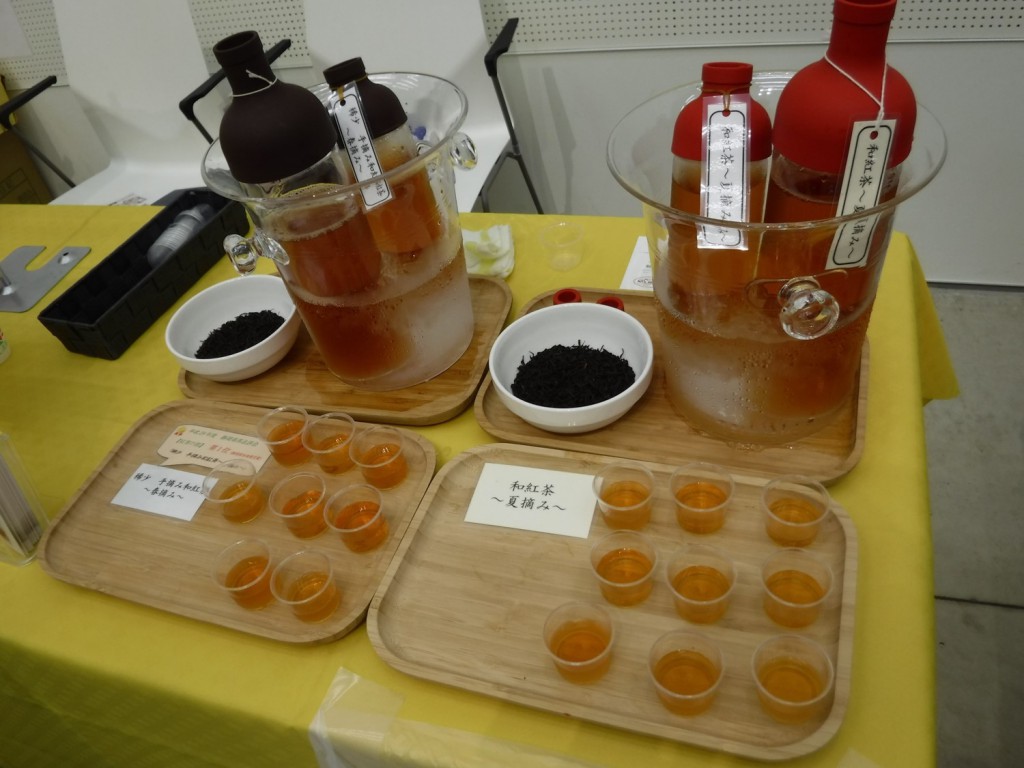
Black teas produced by Kanetou Miura-en. The left one “Premiun Spring Hand Pluck” is elected as the 1st place in the tea selection in Shizuoka prefecture.
I have loved his black tea since early time he started the production (as posted previously). As implied by the series of awards he got, his master craftsmanship of black tea production is recognized by many people, among not only tea professionals but also general customers.
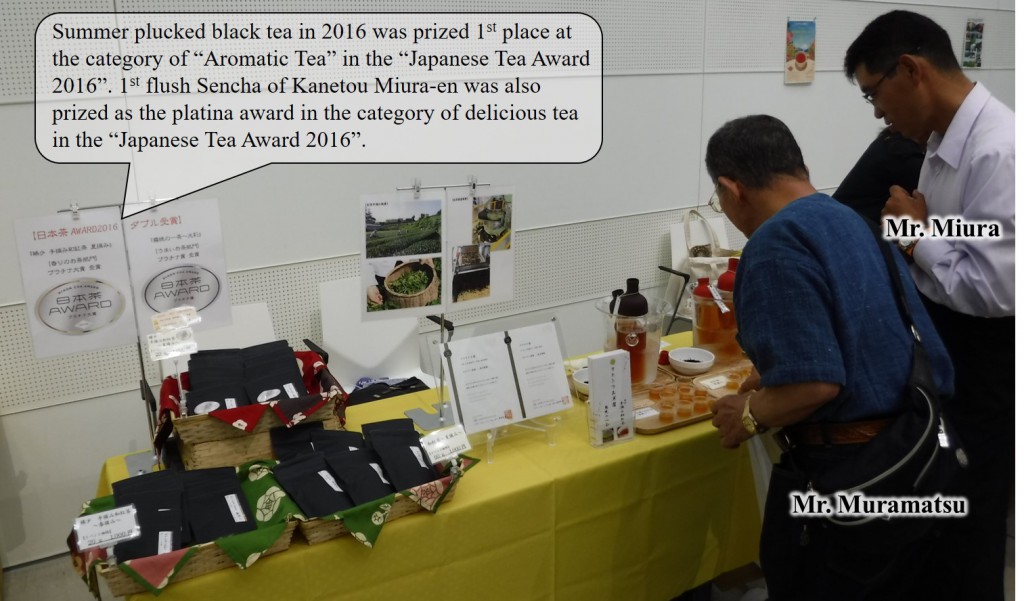
Mr. Miura discussed with Mr. Muramatsu, who is the master craftsman of Japanese black tea in Shizuoka. His black tea was loved by not only customers but also tea professionals.
Benifuki Premium presented by Imura-en
Mr. Imura has created the special black tea that expresses peach-like aroma, as posted previously.

Smoked Black Teas presented by Kaneroku Matsumoto-en
Mr. Matsumoto is one of the keenest young tea farmers in Shizuoka, who are highly motivated to create new tea products. In fact he created unique products of smoked black teas. His repeatedly trials and errors could led him to smoke black tea by using wood chips of Japanese whisky cask. Whisky-cask-smoked one has very sharp aroma, which is smoky, whisky-like note.
His unique products can attracts many people from young women to tea professionals.
The premium bottle of his black tea is going to be served in some classy restaurants in Japan. Indeed, I want to drink a cup of his smoked tea as an aperitif!! The sharp aroma of his smoked tea would stimulate our senses and accelerate conversation on dinner.
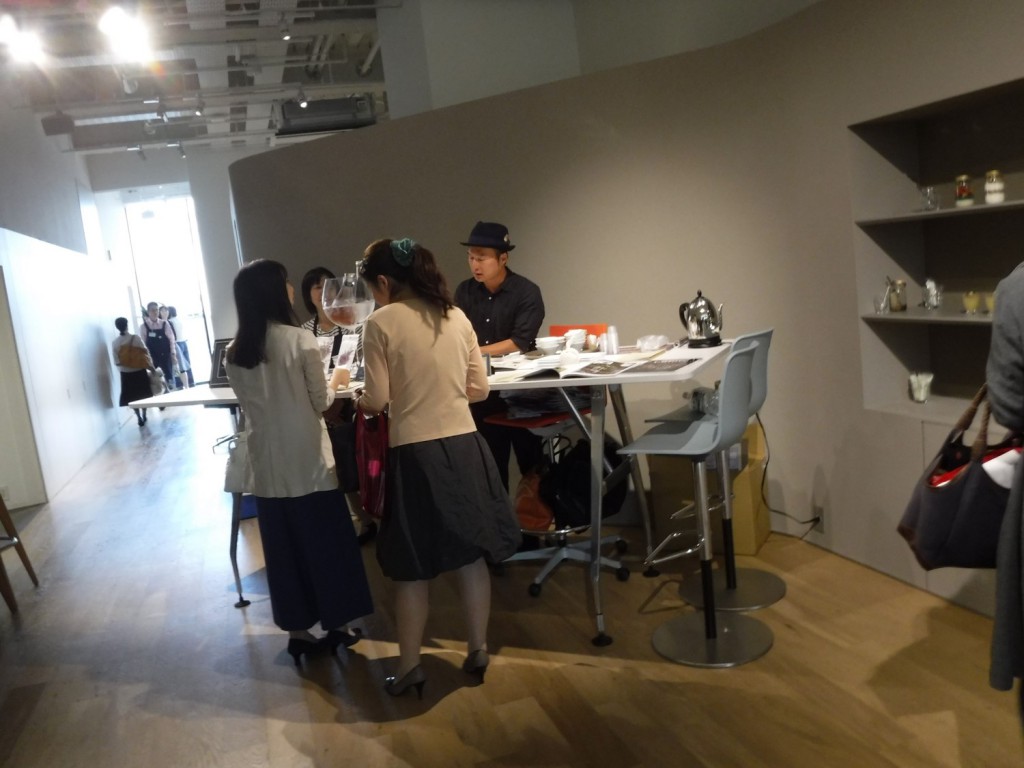
Young women were curious with the smoked black tea by Kaneroku Matsumoto-en.
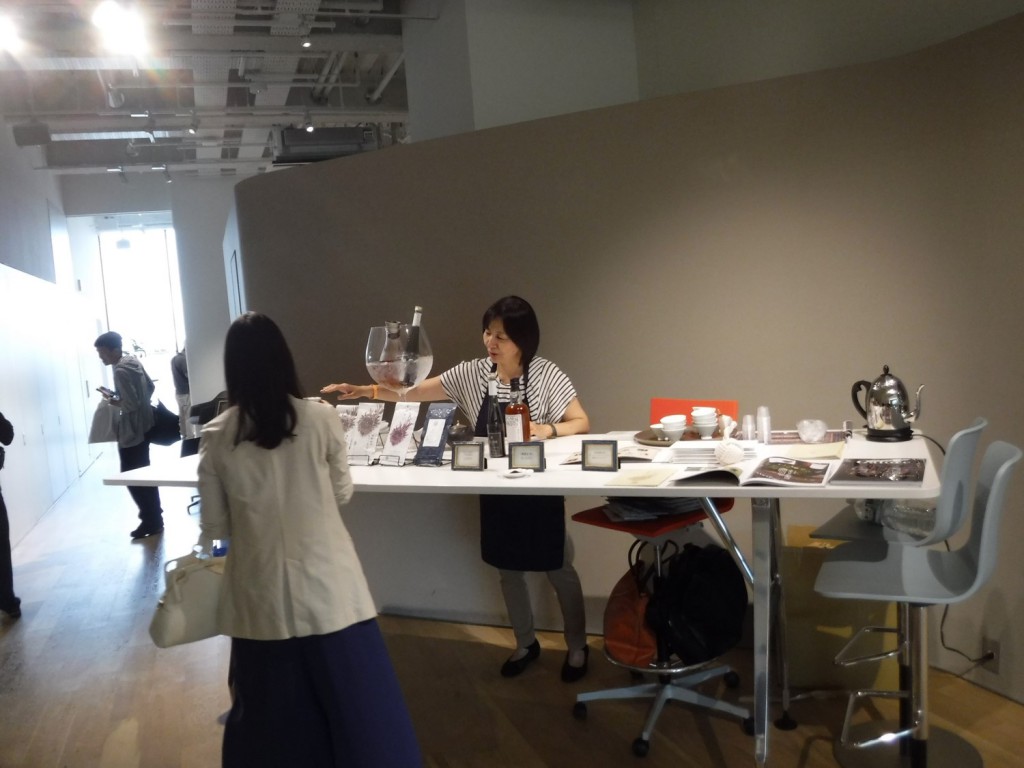
Bottled black tea smoked with whisky cask got concerned by many visitors.
Black and Oolong Teas presented by SHIBAMOTO
Mr. Shibamoto is also one of the keenest young tea farmers in Shizuoka. His creative mind produces a wide variety of black and oolong teas by controlling pan-firing and withering, optimizing the period of plucking, managing tea plantations based on the mind of organic farming.
As implied in his photo, he uses manure of goats as organic fertilizer. He calls this method as “Goat Farming”. In addition of manure, the goats eat weeds on tea plantations, resulting in removal of weeds.
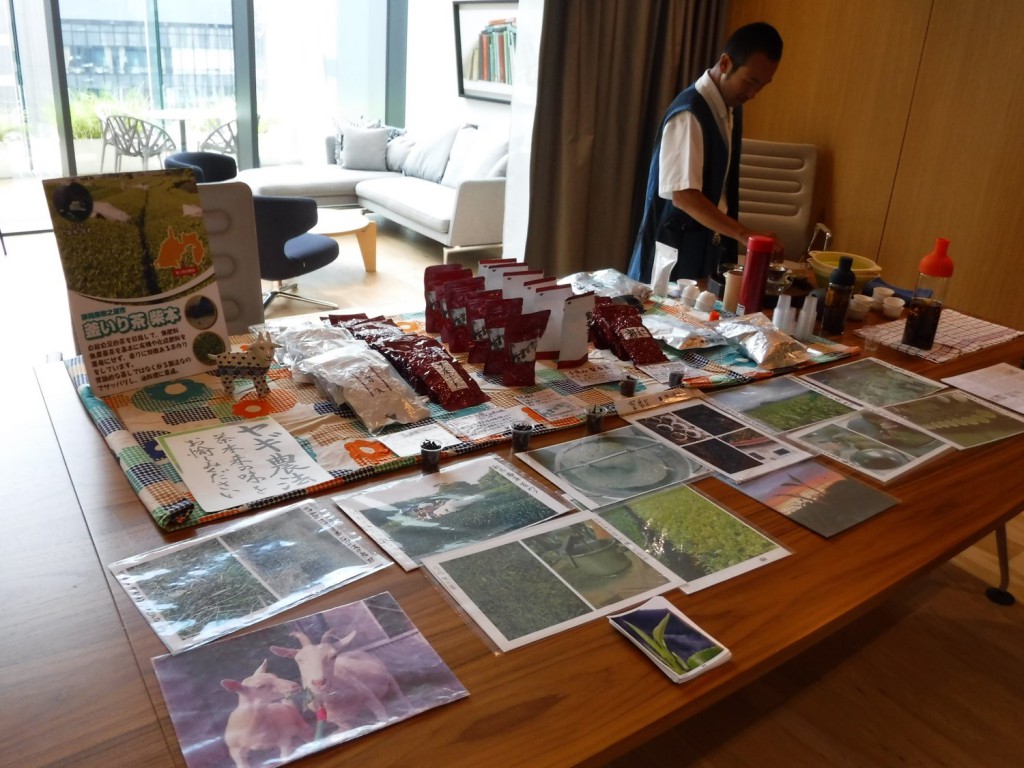
I was amazed his skill of insects management, which can enhance the generation of fruits-like aroma in tea leaves, as well as “Oriental beauty” oolong tea in Taiwan. He keep the adequate density of tea green leafhoppers by optimizing plucking plan. The density of tea green leafhoppers start to increase from May, the later period of first flush. They start to suck the sap on “later tea shoots” of first flush, which locate at deeper part of leaf layer under the canopy, as a result grow later than the upper shoots. Mr. Shibamoto plucks the later tea shoots of first flush when the density of insects increase enough to enhance the aroma generation due to the stimulation of sucking sap. After the plucking, the density of insects decrease because of the lower amount of tea shoots. Thus he can keep adequate density of the insect, which is not enough disease tea production but enough to generate the special aroma.
In the second flush, the density of insect increase enough to enhance the generation of special aroma.
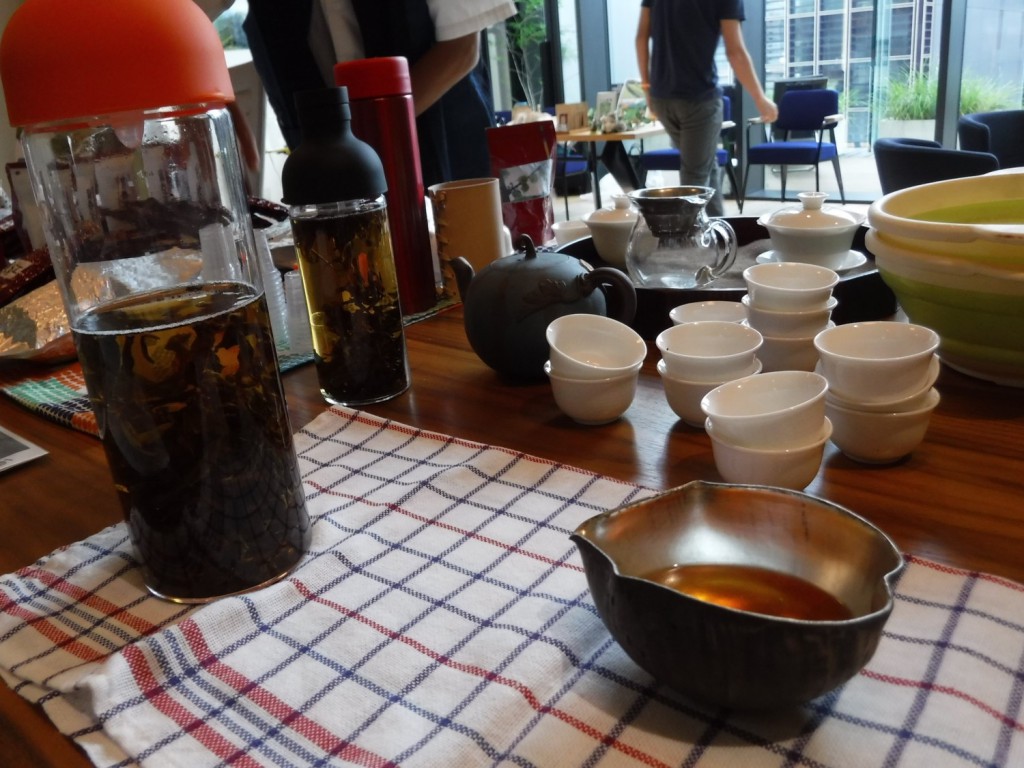
Black teas presented by Shinkoju – the specialist of tea cultivars
Shinkoju has the greatest skill to process and refine crude teas of multihued cultivars according to their characteristics of each cultivar. The owner of Shinkoju has a quite wide range of knowledges about various tea cultivars, such as flavor, tannin content, leaf thickness, suitability for withering, property of aroma generation and maturation in black tea processing.
His special insight for tea cultivars enable to have a tight relation between him and tea farmers, resulting in the most diverse types of tea he trades.
In this conference, he served 2 types of black tea, “Sayamamidori” and “Benifuki”.
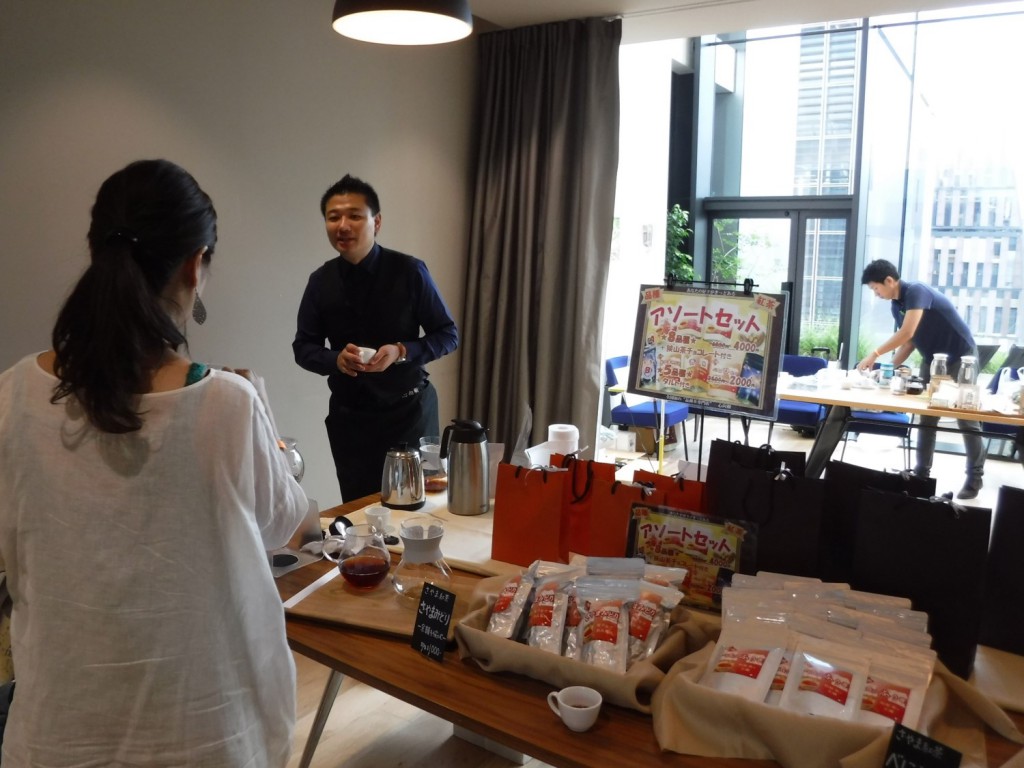
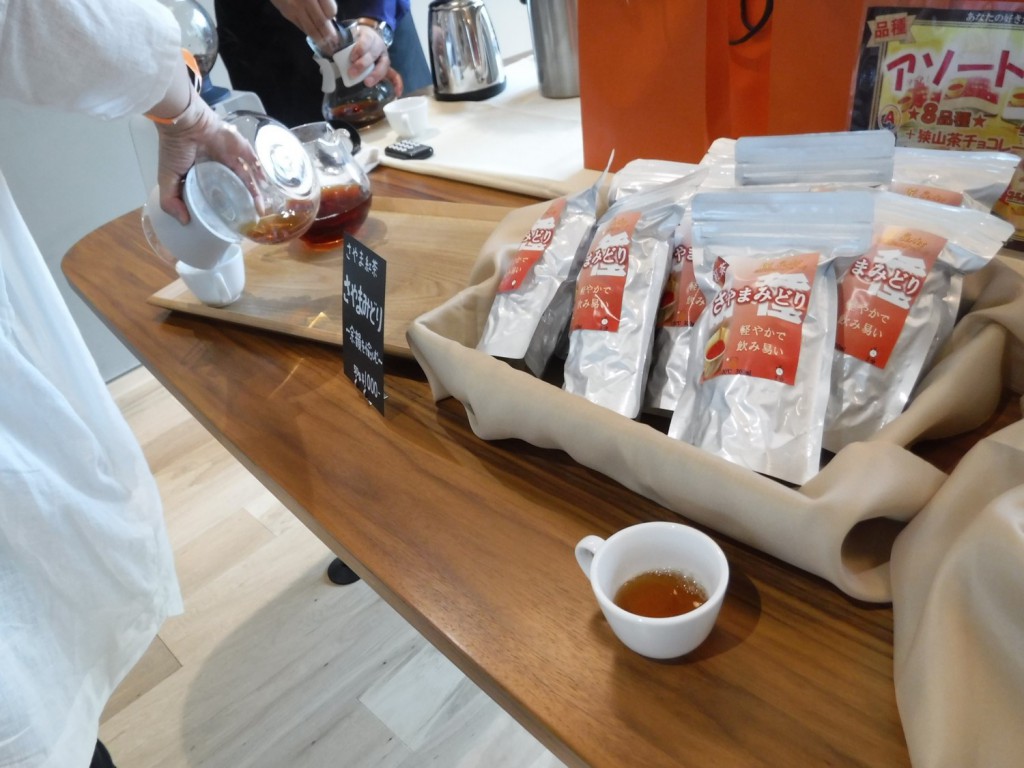
Fujieda Black Tea presented by Mitsui Norin Co., Ltd.
Mitsui Norin, tea trade division of general trading company “Mitsui”, had launched R.T.D. of Japanese local black tea “Fujieda Wakocha” collaborating with tea farmers in Fujieda tea estate in Shizuoka.
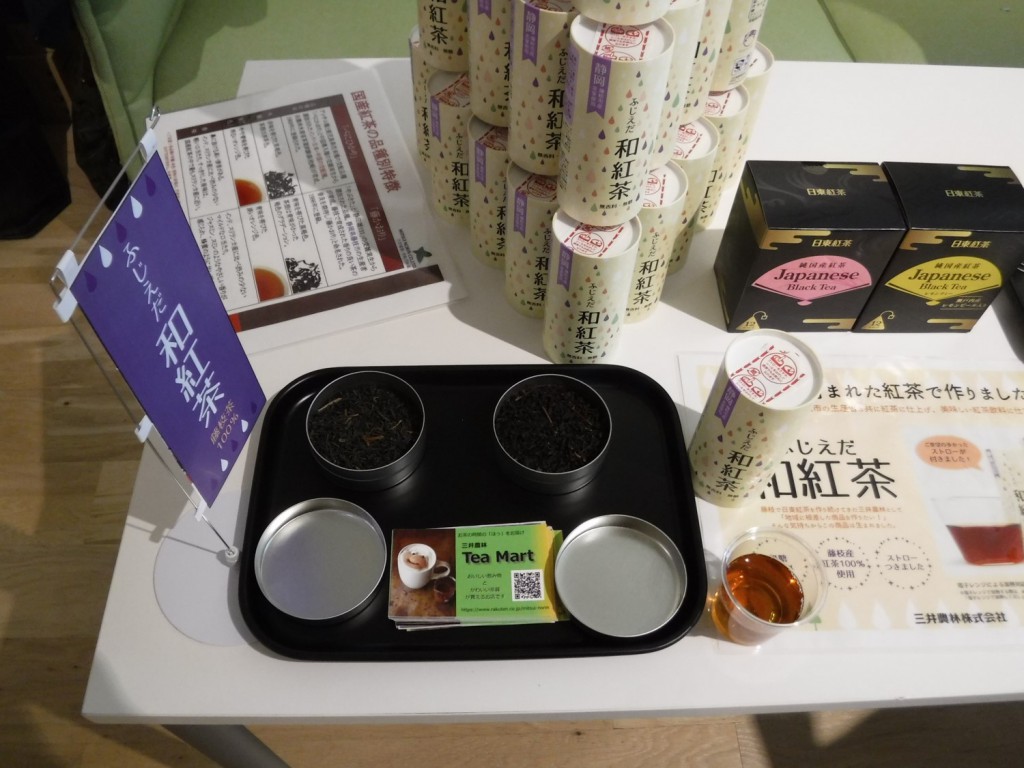
Some cultivars having higher aroma content, such as “Fujikaori” and “Benihikari”, are used for the R.T.D. Mr. Suzuki, one of the most prominent tea researchers in Japan, displayed loose leaf teas of the main 2 cultivars.
Fujikaori was bred by a tea farmer in Fujieda tea estate. A part of the name “Fuji” is derived from the estate name, and “Kaori” is derived from its meaning aromatic. The cultivar bred by crossing “Yabukita” with “Shizu Inzatsu 131” which is one of the Assam cultivars.
Benihikari is the mixture of cultivars from 3 countries, India, Japan and China. This cultivar bred by crossing one of Chinese cultivars with “Benikaori”, which was bred with one of native varieties in Kagoshima region and one of Assam cultivars.
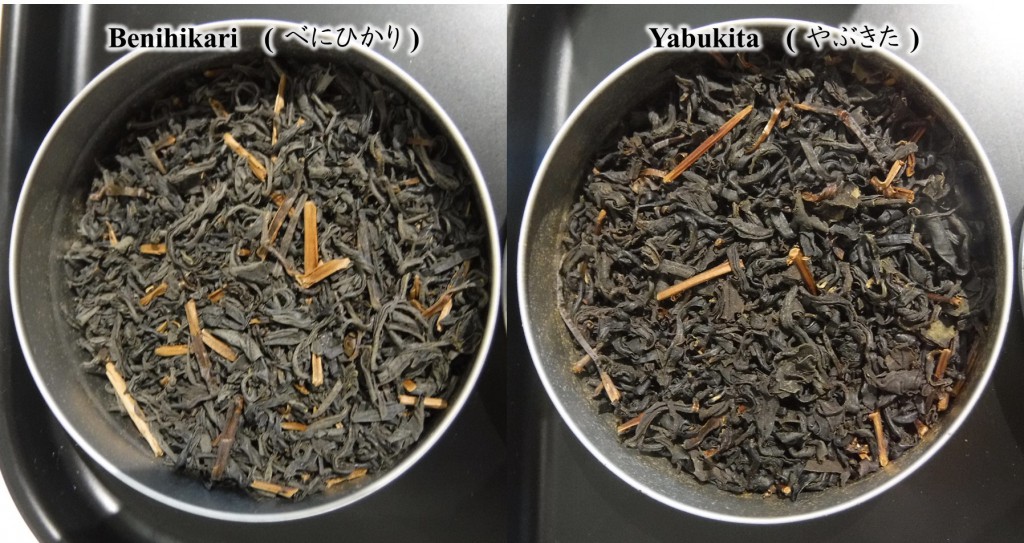
“Fujieda Wakocha” has bright amber color and soft texture with mild aromatic finish. The mild flavor and aroma would heal our mind.
In addition to these specialty teas, specialty confections were also served, which are well-matched with Japanese black teas.
Kashiko presented traditional sugar works
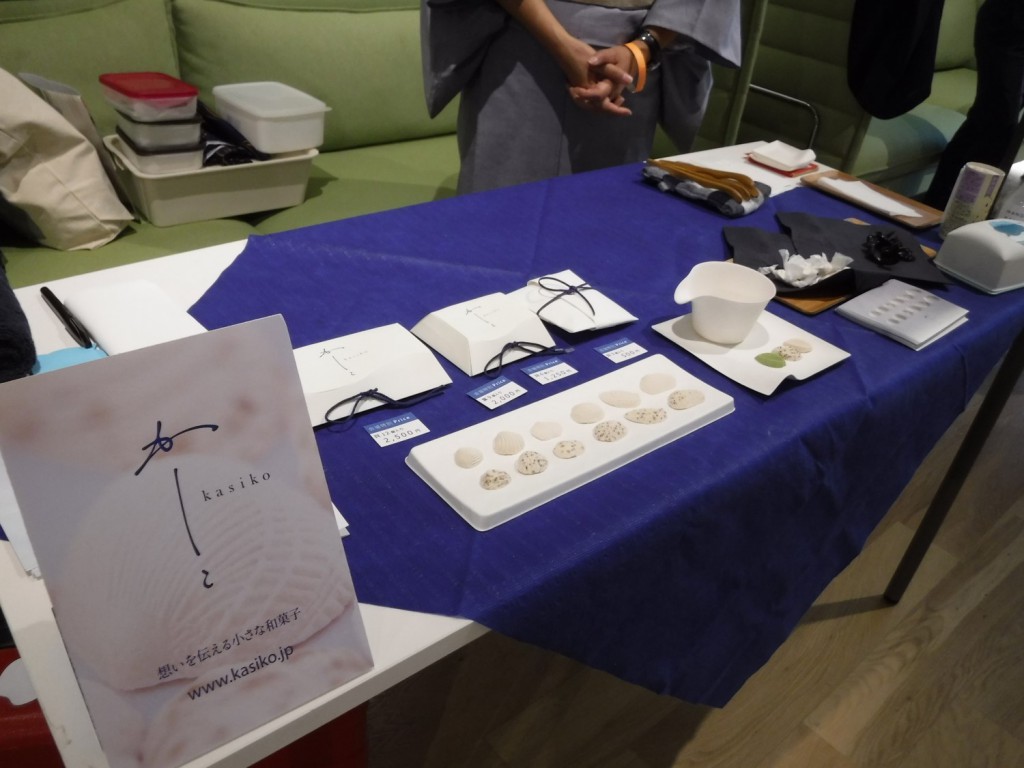 Kashiko has been established since later Edo period and sold traditional sugar confection. The craftsmen produce the sugar confections by using the special wood molds that their ancestors craved in Edo period.
Kashiko has been established since later Edo period and sold traditional sugar confection. The craftsmen produce the sugar confections by using the special wood molds that their ancestors craved in Edo period.
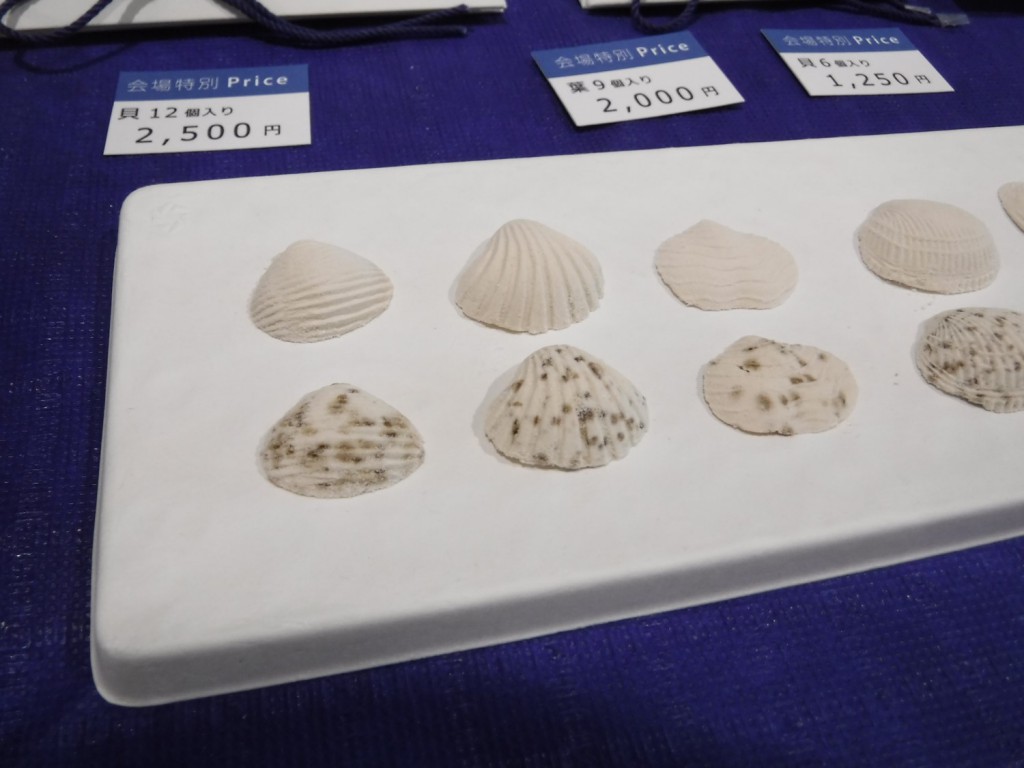
Cute shell-shaped sugar pastry was made by using traditional wood mold.
The pastry strictly selects ingredients such as “Wasanbon” sugar, crude sugar and matcha. They use crude sugar and matcha for addition of color of brown and green, respectively. As a result, we can enjoy seeing cute appearance of marble shell and green leaf of sugar confections. And of course, the taste is so excellent and elegant!! They melt on my tongue smoothly without any stimulus. And then, the delicious finish let me want to drink teas of soft texture, for example Japanese black teas served in the lounge. These historically-established sugar confection are very very well-matched with Japanese black teas!! (Of course, they would be also very well-matched with Sencha green tea.).
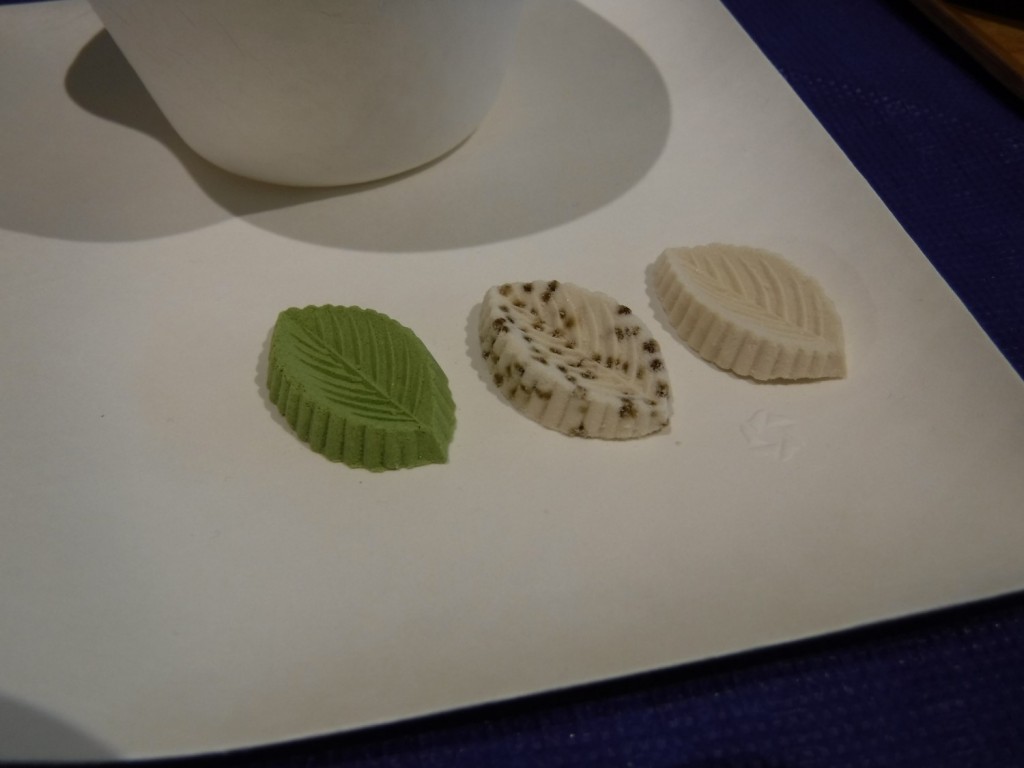
Leaf-shaped sugar confection. Green leaf type was colored by mixing matcha.
SOCORA – An artistic confection crafts shop
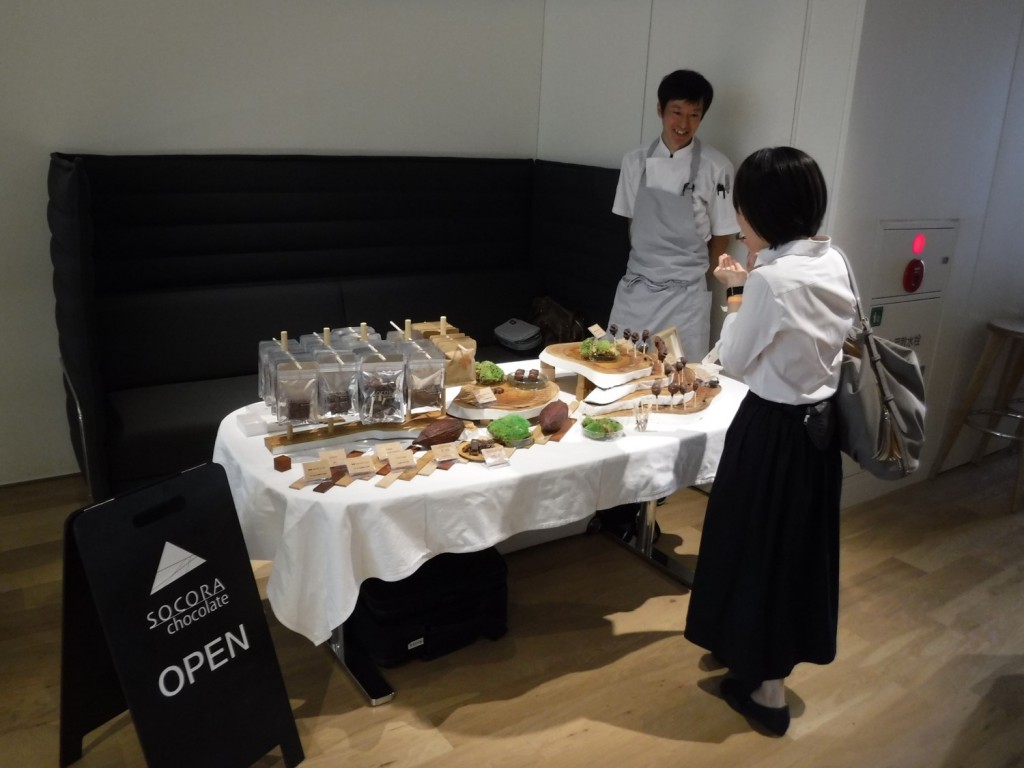 Kohei NISHIYAMA is the owner and patissier of SOCORA. His enthusiasm for pastry makes him to select ingredients strictly, resulting in the meet with specialty black teas all around Japan. He created chocolate confection containing specialty black teas. In order to maximize the flavor of black teas, he coated black teas meringue with chocolate. He prepared such type of chocolate for 3 types of specialty black tea, smoked black tea by Kaneroku Matsumoto-en, Kyoto black tea by Wazuka Kocha and Minamisayaka black tea by Miyazaki Sabo. Yeah, I could enjoy delicious chocolate with various aroma characteristic to each black tea.
Kohei NISHIYAMA is the owner and patissier of SOCORA. His enthusiasm for pastry makes him to select ingredients strictly, resulting in the meet with specialty black teas all around Japan. He created chocolate confection containing specialty black teas. In order to maximize the flavor of black teas, he coated black teas meringue with chocolate. He prepared such type of chocolate for 3 types of specialty black tea, smoked black tea by Kaneroku Matsumoto-en, Kyoto black tea by Wazuka Kocha and Minamisayaka black tea by Miyazaki Sabo. Yeah, I could enjoy delicious chocolate with various aroma characteristic to each black tea.
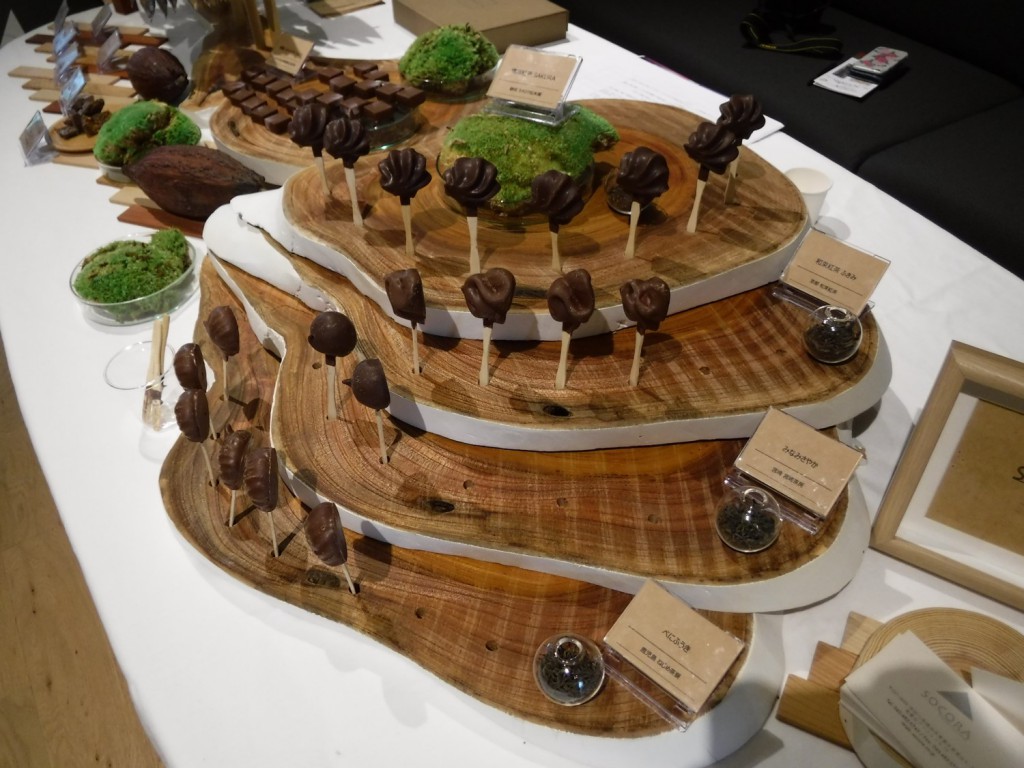
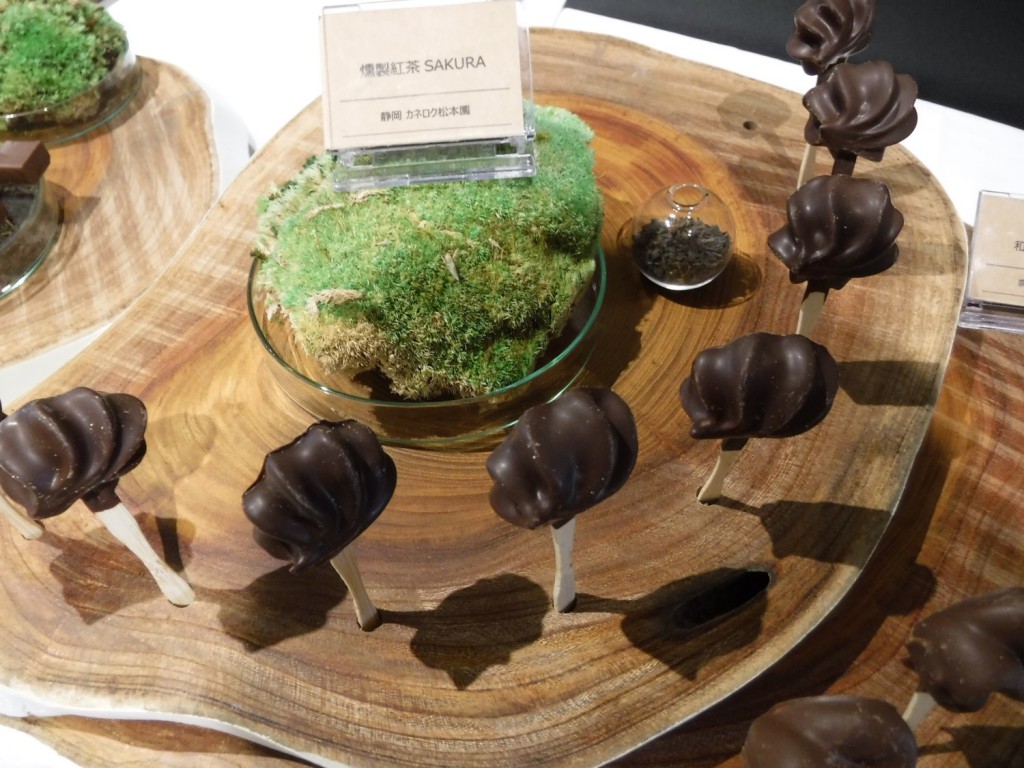
He also pay his energy for expressing scene suiting for each confection. In this conference, he decollated the table with wood-craft made by himself. Amazingly he cut and brought the wood slices from a forest!!
Communication among creative minds on the exciting field could enhance the further development of each other. The conference held on Itoya was so impressive and inspiring!!
Their specialty black teas will be exhibited on the selection “Japanese Tea Award 2017” held on 1st and 2nd December in Shibuya HIKARIE. If you have some concerns about Japanese specialty, it is recommended to participate the tea party.
